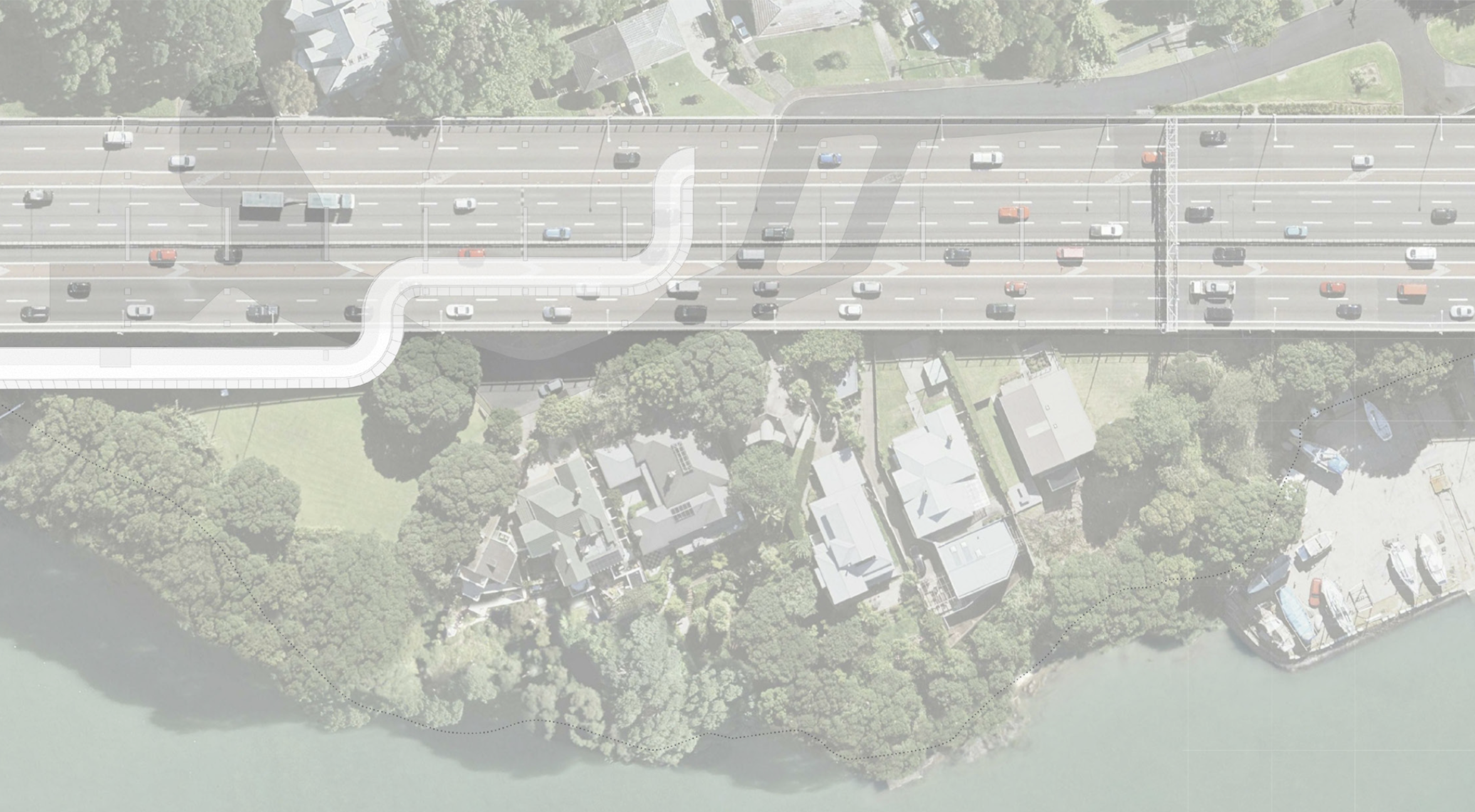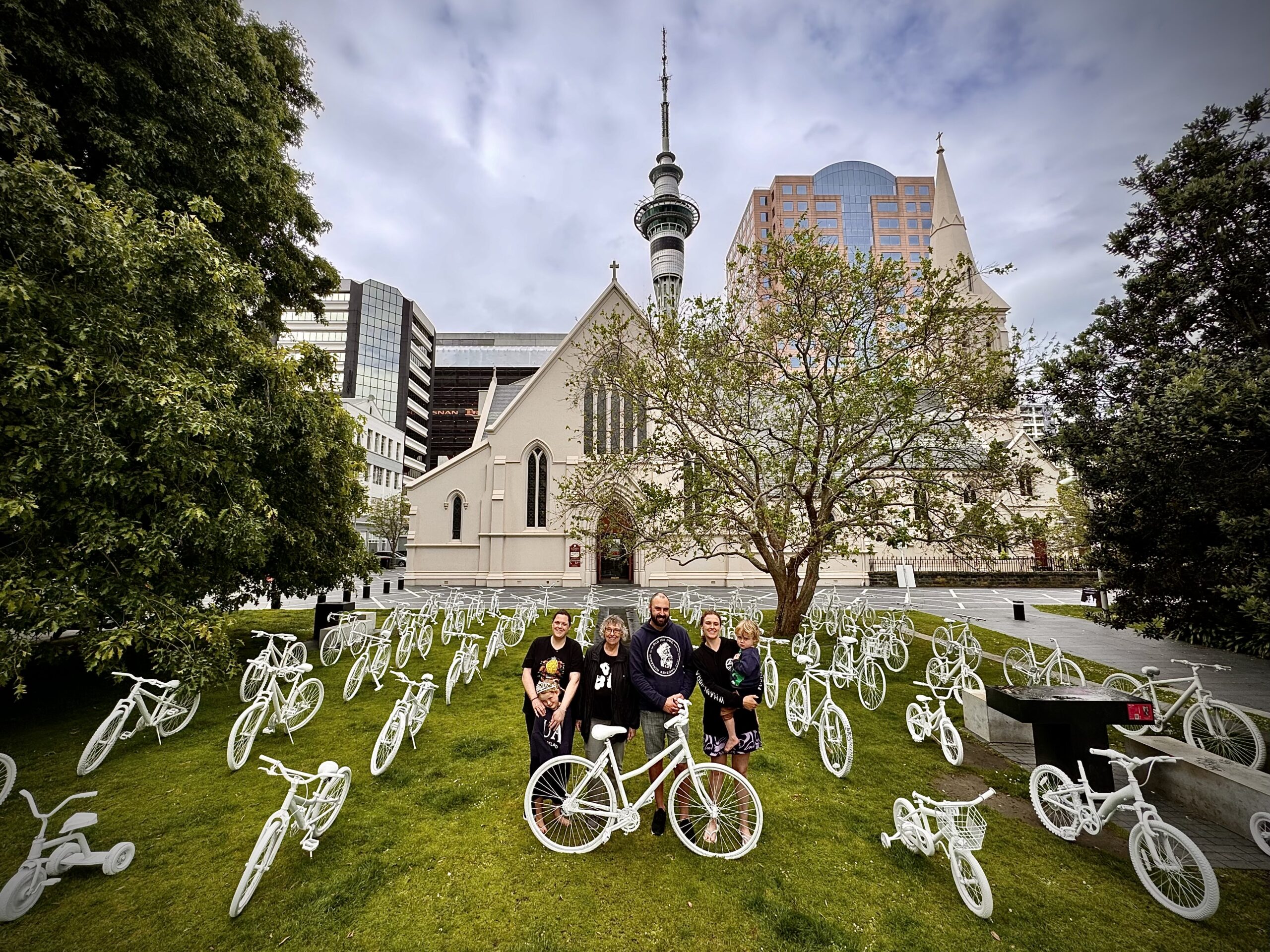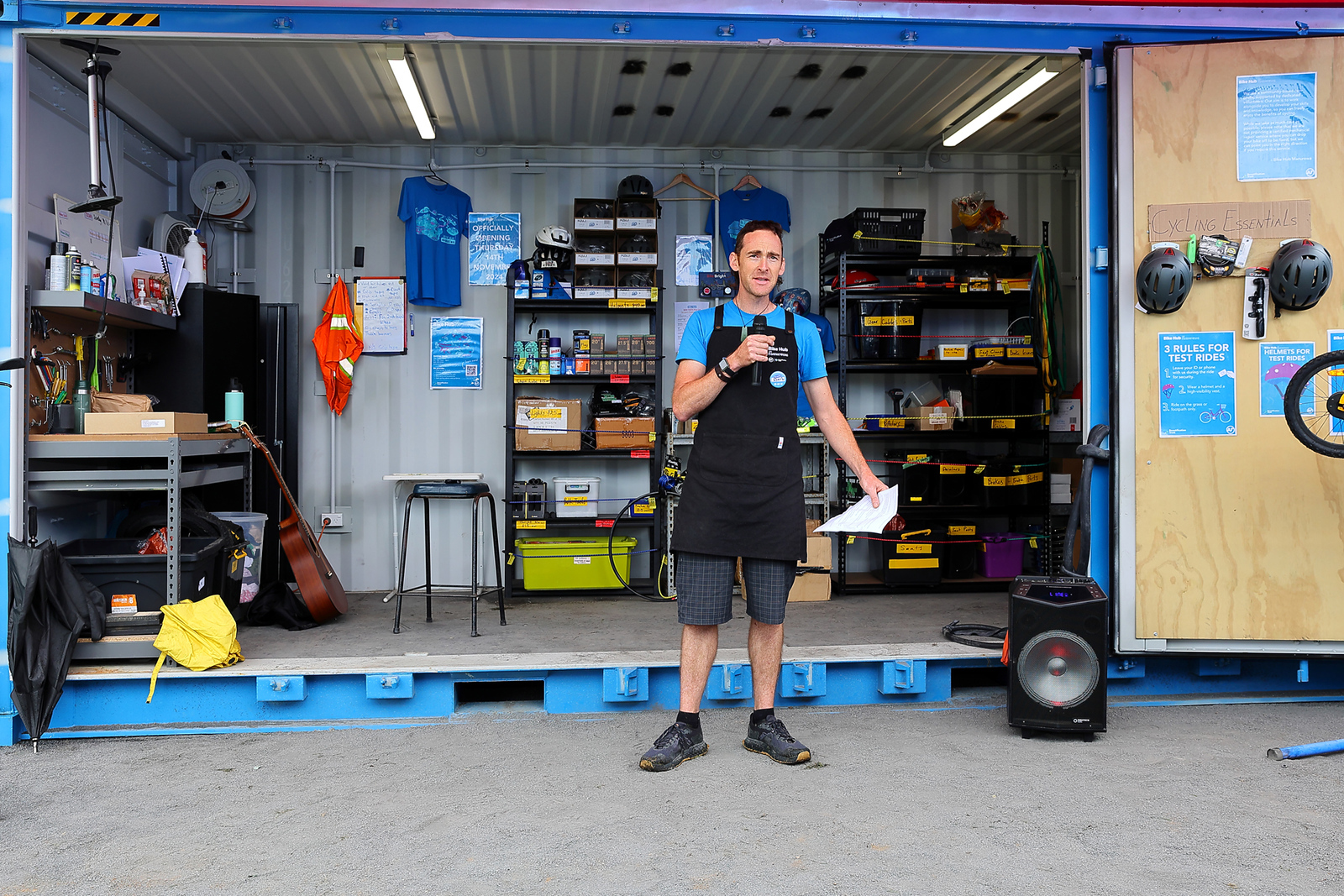The Transport Agency is looking for feedback on the landings at each end of the Auckland Harbour Bridge Shared Path (aka Skypath 2.0). Feedback is open until Wednesday 4 September.
The “emerging design” proposes ramps at each end. Lifts and stairs have also been investigated, but are less desirable for a host of reasons. There’ll be more details to come, but for now we encourage you to say YES to the ramps.
Let’s keep things simple, affordable, and eminently (and imminently) buildable – and show loud and clear we want this path built ASAP!
Scroll down for the images and our take – and here are the crucial links for giving feedback:
Heads up: there’s also a drop-in session at the Ponsonby Primary School Hall, 44 Curran Street, Thursday 22 August, 5 – 7.30pm.
Eyes on the prize!
NZTA’s articulation of the big picture continues to impress us. The consultation document reminds us all that this isn’t just about access over the bridge – this is about completing a missing link in the wider network, which will connect to SeaPath and thus create a seamless, uninterrupted connection from the North Shore to the central city and spreading out across the isthmus cycleways. This is huge.
Why this particular consultation now?
With NZTA now in charge of the design, they’re working on a detailed business case (DBC) to take the Board. As part of that process, they’re checking back in with stakeholders – including those who’ll use the pathway, and those who live near it, to zoom in on any key design issues.
And it will help the DBC to have some clarity around the landings, how they work with the existing consent, and how they tie into SeaPath and the onward connections at both ends.
What are the options for the landings?
Two options: ramps, or a lifts + stairs combo. (The original SkyPath design doesn’t dovetail with the new 5m-wide pathway at deck level)
- Option 1: Ramps that are specifically designed to connect with the Transport Agency’s new preferred design (which is now 5 metres wide rather than 4 metres). These are located under the Auckland Harbour Bridge at both ends, largely within the consented SkyPath design footprint.
- Option 2: Lift and stairs combination, located next to and underneath the Auckland Harbour Bridge
Note: all images below are artists’ impressions showing indicative and approximate locations.
OPTION 1: RAMPS
Ramps at the Northern Landing

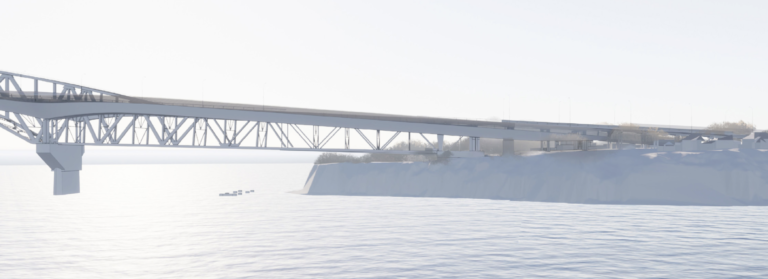
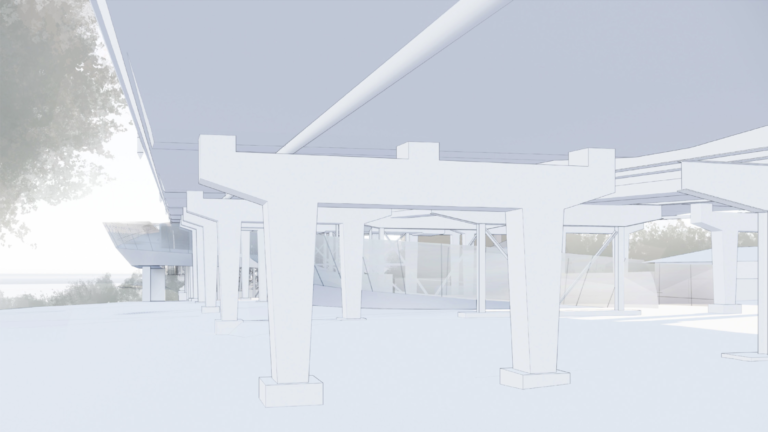
Ramps at the Southern Landing
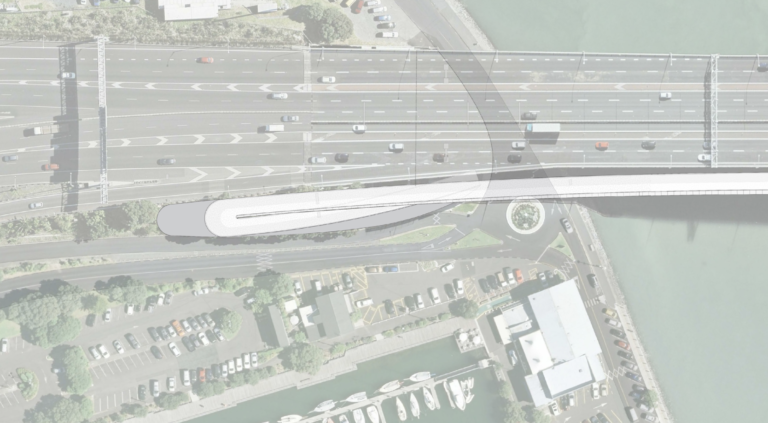

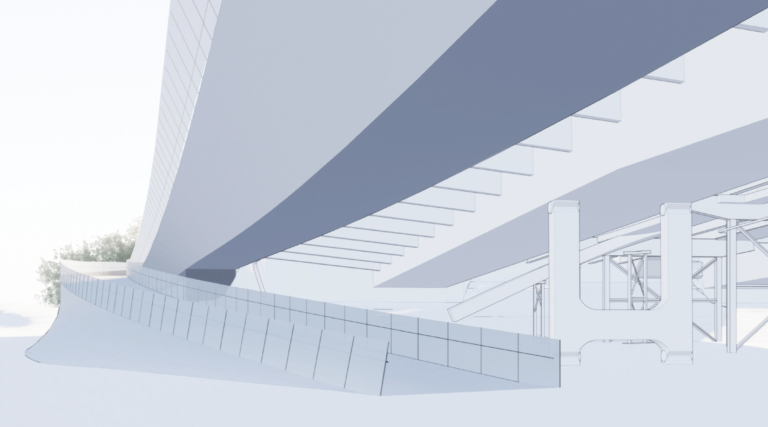
OPTION 2: LIFTS & STAIRS
Lift & Stairs at the Northern Landing
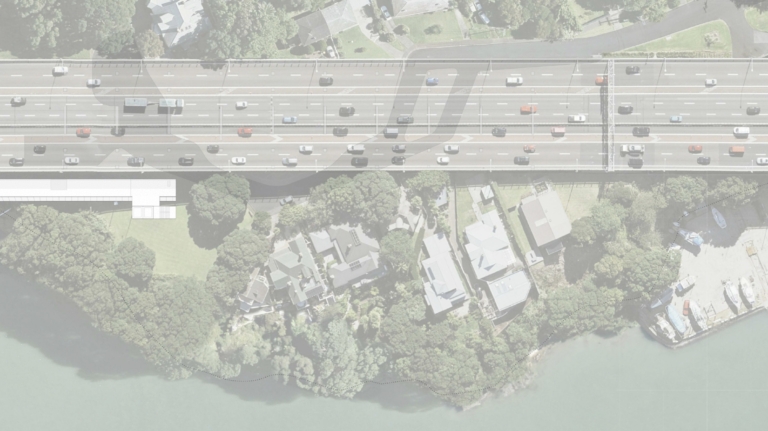
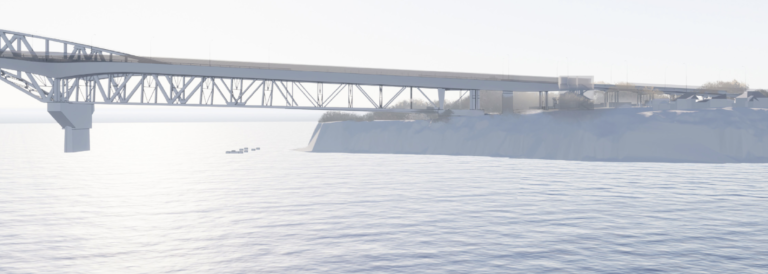

Ramps & Stairs at the Southern Landing
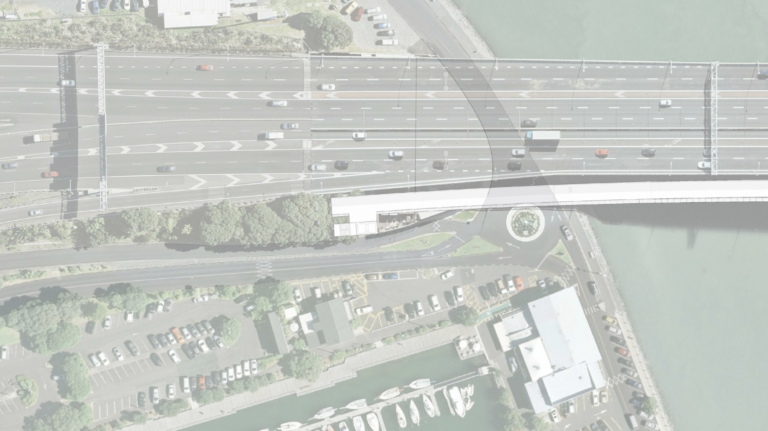

So it’s ramps, obviously?
Obviously! As a transport link, it’s critical that the pathway works for transporting all the people who’ll use it.
There’s a straightforward simplicity to the ‘acoustic’ option that works for everyone. Roll on, roll off. No waiting times. And who wants to carry a bike, let alone a cargo bike or several children with bikes up several flights of stairs?
The only advantage we can see with stairs is they’d provide a sporting challenge for people who like that kind of thing. And lifts, while offering the promise of easy access, bring a whole host of potential issues with capacity and operation, both functionally (as understood by anyone who’s attempted to use the St Mary’s Bay bridge when the lift is out-of-order) and in terms of managing the flow of people on and off (picture the queues in the undercroft at peak times).
Do the ramps work with the current consent?
That’s for NZTA’s legal team to determine, but we’re reassured that at the northern landing, the proposed ramps can stay in the reserve (and decouple from following the line of the AHB deck earlier), allowing for an even simpler, cleaner ramp system than the original Skypath ramps.
Any other issues with the ramps, at first glance?
Gradient would be the first question on many people’s minds: will there be steep sections, and will it be accessible for those using wheelchairs and other mobility devices? We understand the ramp gradients would be in the same realm as the gradient of the bridge and thus the path itself.
The other issue is visibility, e.g. maximum transparency at the bend on the Southern ramp, where we assume people on wheels would stick to the outside of the bend. At the Northern landing, more opaque panels along the outer edges of the path may be preferred to ensure privacy for people’s back yards – which we can totally support, as long as NZTA makes sure this doesn’t create any blind spots around curves on the ramp itself.
And lastly, connections. At the southern end in particular, we’re interested in how the ramp would smoothly interface with the roundabout slip lane, Curran St, and Westhaven Drive/ the Westhaven boardwalk. At the northern end, we expect a smooth connection with SeaPath, as well as a handy exit for Northcote Point.
Why not both: ramps AND stairs/ lifts?
We can see a bunch of reasons: expense, time, complexity, and consents. The ramps are closer to what’s already consented, which likely makes things easier, process-wise. And going for both – if it could even be done inside of the existing consent – would add a great deal of time and cost to design and construction. After decades of delay, the clock is ticking on this one. A bird in the hand, etc.
Also, to our eye, you could maybe retrofit lifts and stairs in future if you wanted to, but it would be much harder and perhaps impossible to start with lifts and stairs, and then attempt to add ramps later. That’s because the ramped design needs to start dipping back down to the ground earlier than the lift option. So, coming back and adding ramps later might require a full rebuild of the lifts and stairs too, adding huge cost and likely closing the path for many months. Nobody would want that.
On this point, the consultation document has this to say about timing and cost: “The soonest that construction could start on the project is late 2020 and it will take about two and a half years to build. The estimated cost is $100–$140 million, but we will have more certainty on the cost once the DBC is completed.” Aucklanders are champing at the bit for this project to get going, and get done. Ramps, and ready to ride in (ideally) 2023? We’ll take it!
Add your voice in support before 4 September!

